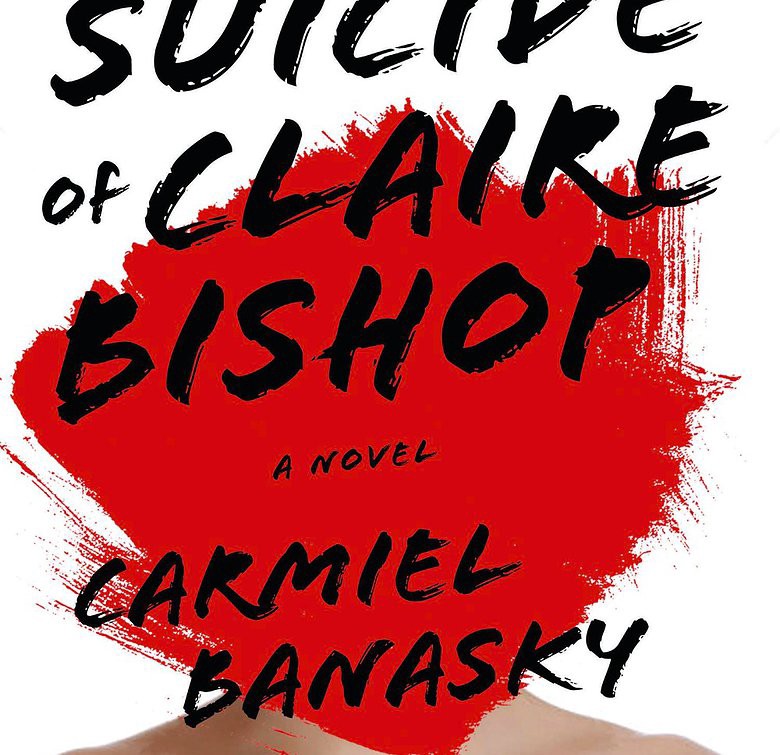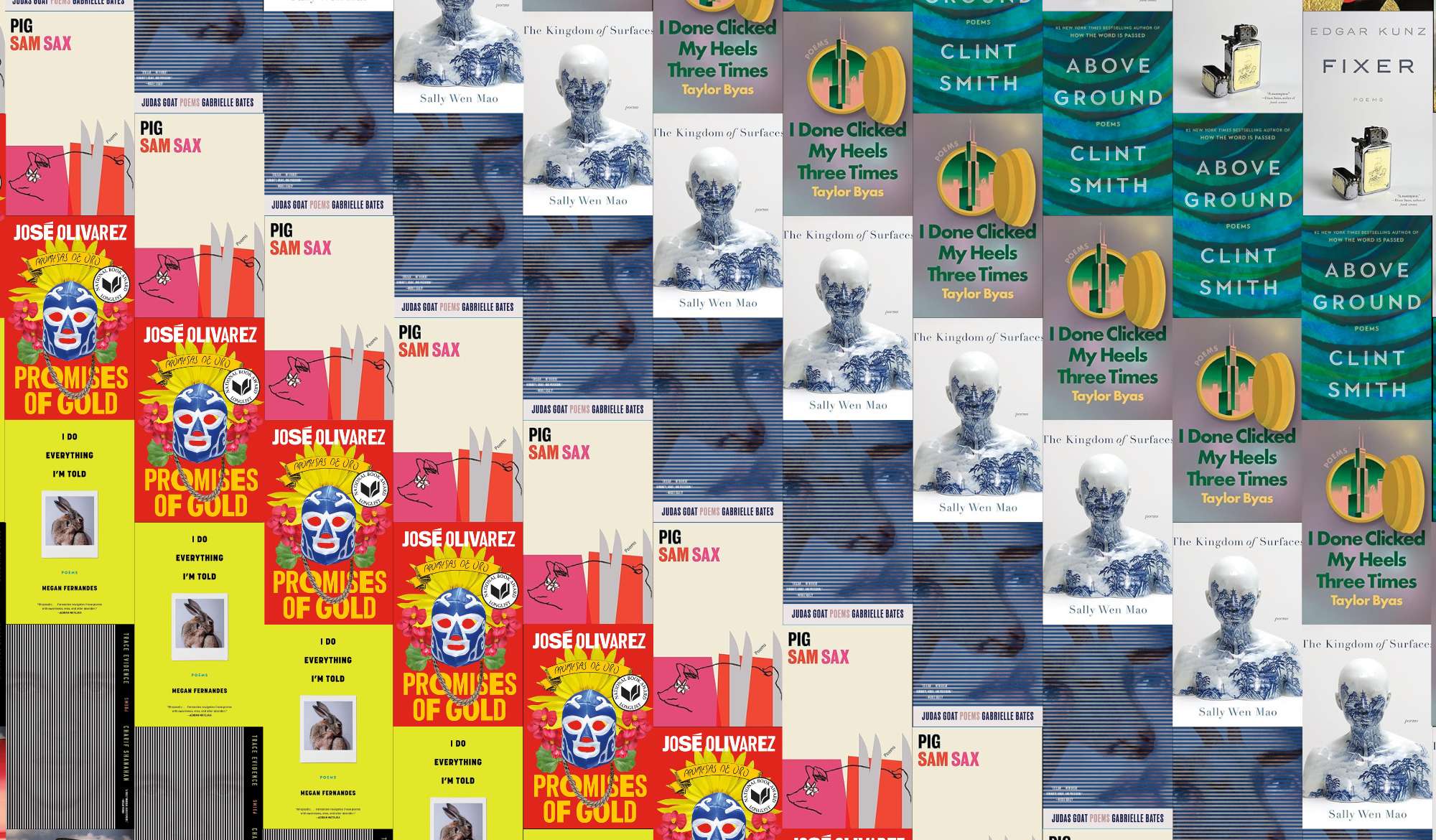Books & Culture
Everything Is Art: The Suicide of Claire Bishop by Carmiel Banasky

While girls have gone missing in books before, Carmiel Banasky’s The Suicide of Claire Bishop takes the trope to the funhouse.
The book begins with its titular heroine, Claire Bishop, sitting for her portrait in Manhattan, 1959. The artist, a mysterious young woman named Nicolette, was hired by Claire’s husband as a gift to his wife. “Claire” is a loaded name in American pop culture — think of the accessories store that pierces teenaged ears, of Molly Ringwald in The Breakfast Club, of the heroine of The Time Traveler’s Wife — and Banasky plays on those associations by presenting Claire Bishop as an over-indulged white woman drinking away her bad marriage and small town past. Banasky’s heroine is so repressed that she will only flirt with the idea of flirting with Nicolette. The question of Claire’s existence as a fully realized human being is presented to her by Nicolette, whose portrait is a series of variations on Claire’s possible suicide. The artist claims to have saved Claire — “I took this notion of your death — your suicide — and I gave it to the work. So it can’t happen. Do you see?” — and promptly disappears.
The second narrative woven into The Suicide of Claire Bishop is that of West, a young man medicated for schizophrenia and searching for — surprise! — an artist named Nicolette. This Nicolette is also, according to West, the unnamed artist who created the portrait of Claire Bishop. But the mystery of Nicolette is distorted by the wrinkle of time: West is conducting his search in the first decade of the twenty-first century, and he believes Nicolette to be about 26 years of age. He also believes that a secret network of Hasidic Jews is manipulating everything from the art world to his converted sister, and as he gradually cuts his dosage, his paranoia grows.
Banasky’s greatest strengths lie in structure and pacing. The intertwined narratives move forward and backward in time, circling around the same painting, which, like both its subject and its creator, disappears for years at a time. The Suicide of Claire Bishop is a book you read to resolve the riddles, all the while suspecting that you have already guessed the answers. You read to the very last page, hoping to be proven wrong. Banasky weaves together two lives in permanent crisis without ever letting one outweigh the other — a stunning balancing act.
One of the subtler aspects of this hard-driving mystery is the revelation Claire Bishop uncovers about herself: her bisexuality, which comes to fruition with her off-and-on friend Mary. The blurred boundary between female sexual tension and competition is one well-chronicled in American literature, and Banasky perhaps gives a nod to Nell Larson’s Passing by toying with the idea of death as the cost of crossing borders. But though Claire permanently verges on suicidal, she does not seem to do so as a result of her relationship — or loss thereof — with Mary. In fact, the relationship between Claire and Mary seems to have very low stakes. Claire comes to Mary more out of depression and desperation than love or even lust, and their physical encounters frequently include references to Mary’s “chapped lips.” The trajectory of Claire’s hesitancy in life, as well as her relationships with her mother and Nicolette, make this apparently accidental relationship believable. However, Claire’s own questions about the relationship go unresolved: “Mary had had other women. But why me? Claire wondered. Why now?”
As a debut novel, The Suicide of Claire Bishop is indicative of a promising career because of the questions that its author dares to ask. The time markers that Banasky drops like crumbs throughout her first novel are meant more as a garnish than as an ingredient for her main course: art and identity. Claire Bishop comes across, at times, as an under-developed character, but the underlying question is how much a woman in her time and situation could develop. She is at her prime both as a character and a person when, in late middle age, she returns home to care for her mother, who is plummeting into Alzheimer’s-riddled dementia. Though present in both narratives, the missing and mysterious Nicolette is little more than a woman in tight black pants with a pixie cut. Glimpses of Nicolette taunt the main characters as well as the reader. How many similarly garbed female artists were recognized for their work, let alone survived the twentieth century?
The second narrative, that of the young man West, serves to ask other questions regarding the relationship between intelligence and insanity as well as the demands that illness places on love. To this end, Banasky shifts from third person close in Claire’s sections to first person stream-of-consciousness in West’s. The latter implicates the reader in the narrative by having West directly address his audience as the voices in his head, a decision that heightens the reader’s emotional involvement. It is as though Banasky rather brilliantly decided to allow us to look at Claire Bishop through the male gaze — as a remote object, the body in a painting — while drawing us into the unstable male mind of West. Though West was also one of Nicolette’s artistic subjects, he (and so we) are never in pursuit of his portrait. We are always searching for the painting of Claire Bishop’s possible suicides, for the images of her destroyed body.
While the contrast between the two narratives pushes the pace into overdrive, the prose in West’s section occasionally borders on the hyperbolic. Several characters assure West of his intelligence, though he needs little convincing. His inner voice is a manic Prufrock: “Like the consumer reports I read every day: it’s all there, on the same plane, equalized, and how should I presume?” The purplish prose deepens in color as Banaksy draws West’s descent from his medicated state, but his relationship with his sister maintains the emotional vivacity of his sections. The consequences of his decisions are destructive and heart-rending, unlike Claire’s, which seem to occur to her haphazardly, not as a result of her own volition. She is passive until the very end.
These two narratives — one of incessant, paranoid action, the other of dazed, passive inaction — build the body of The Suicide of Claire Bishop. Together they seem to beg the question of what it takes to make a life. Is deciding not to kill yourself the same as being alive?

by Carmiel Banasky










